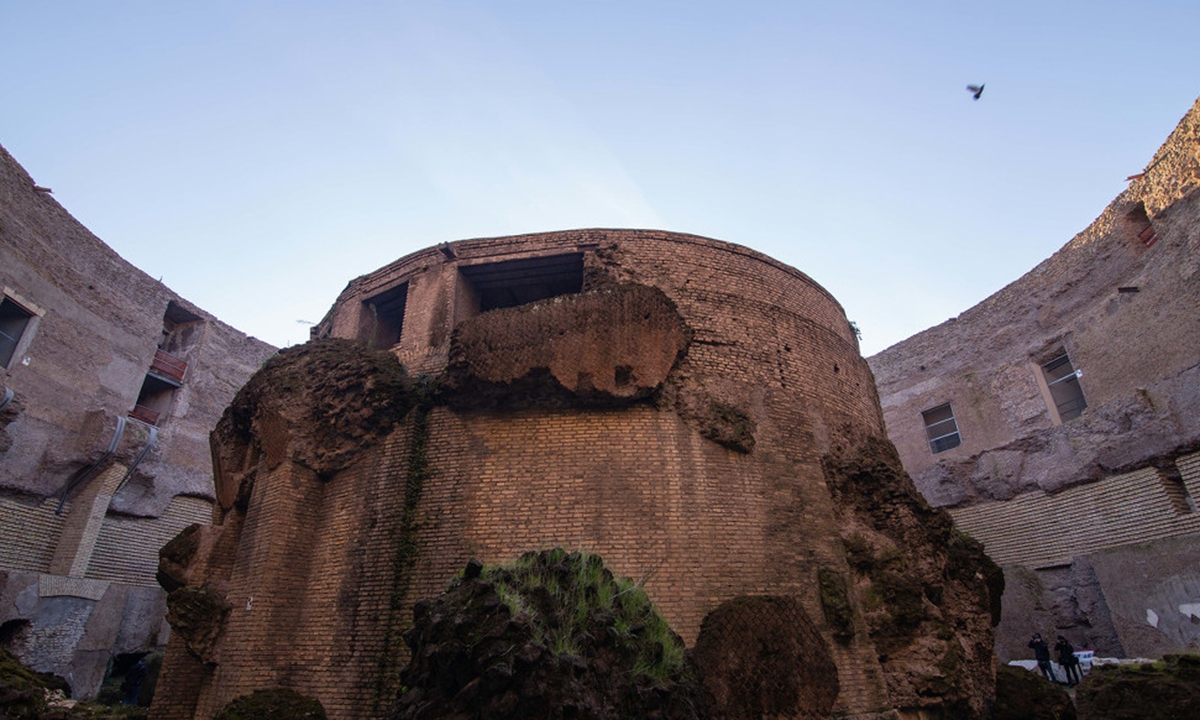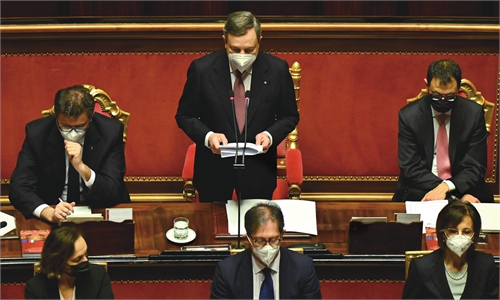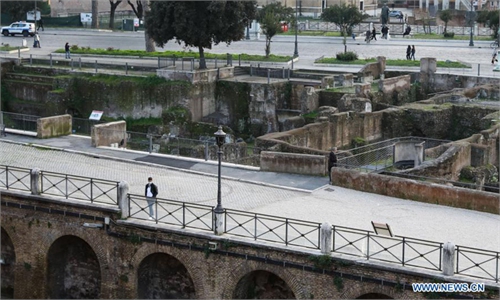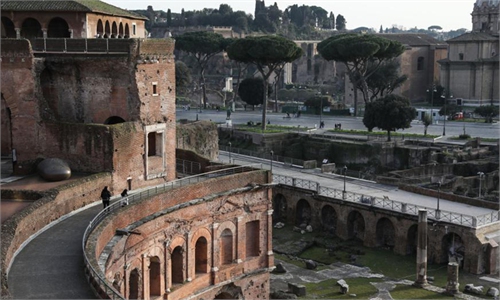ARTS / CULTURE & LEISURE
Rome’s Mausoleum of Augustus is set to reopen, yet no instant access
Lining up for history

The Mausoleum of Augustus in Rome Photo: IC
For the first time in its more than 2,000-year history, the Mausoleum of Augustus fully opened to the public on Tuesday. But Roman history buffs may have to wait a little longer to glimpse the inside of the resting place of the Roman Empire's most iconic leaders.Plans for the refurbishment of the massive structure, nested on the eastern banks of the Tiber River in the heart of Rome's historical center, were first announced in 2006.
Now, after at least half a dozen delays and with a budget of more than 10 million euros ($12 million), doors are set to open to all, 2,049 years after construction on the brick and travertine structure began.
The mausoleum was the final resting place for the remains of Caesar Augustus and more than two dozen members of his family and subsequent emperors and other leaders up until the end of the first century. Since then it has been sacked, plundered, buried and abandoned. It has been used as a castle, as stables, apartments, a circus and a concert hall. But this is the first time in its long history it will be fully open to the public.
"There have been a few times over the centuries that the mausoleum was open by special appointment or for special events, but this is the first time anyone will have the level of access they will have now," said archaeologist Elisabetta Carnabuci, head of the refurbishment initiative.
The problem for anyone who wants to see it in the near term is that tickets for the mausoleum are sold out until late April.
Rome mayor Virginia Raggi, who formally visited the mausoleum early on Monday, declared in December 2020 that tickets would be available free of charge for anyone from the opening until April 21, the date considered to be the anniversary of Rome's founding in 753 BC.
After that, Rome residents will be able to visit at no cost until the end of 2021. Though the structure is large - nearly 100 meters across and more than 40 meters in height - access will be limited to allow for social distancing required by the coronavirus.
Rome's city government was one of the three main backers of the long restoration plan, along with Italy's Ministry of Culture, and Telecom Italia, the country's main telecommunications company.
When the mausoleum opened to a handful of reporters and photographers on Monday, the day before it opened to the general public, it was clear it was still a work in progress. Wooden boards covered flooring and staircases that will eventually be covered in opus signinum mortar, and in certain corners of the structure, plastic crates were stacked holding fragments of internal monuments or pottery uncovered during the restoration. Parts of the walls were still hidden by scaffolding, and there were tractors and trucks moving dirt and equipment in the area outside of the mausoleum that will eventually feature picturesque gardens.
Carnabuci took a break from her regular work to take small groups of journalists and photographers through the mausoleum on Monday. At the end of one such tour, she told the Xinhua News Agency she had no doubt where the mausoleum would fit in among the city's main historical touchstones when all the work is completed and tourists return to Rome in large numbers after the coronavirus pandemic.
"This will be at the top level for what Rome has to offer," she said of a city whose attractions include the Colosseum, the Trevi Fountain, Piazza Navona, the Spanish Steps, and scores of museums.
"This is a key part of the history of Western civilization, and hardly anyone has seen it before now."




